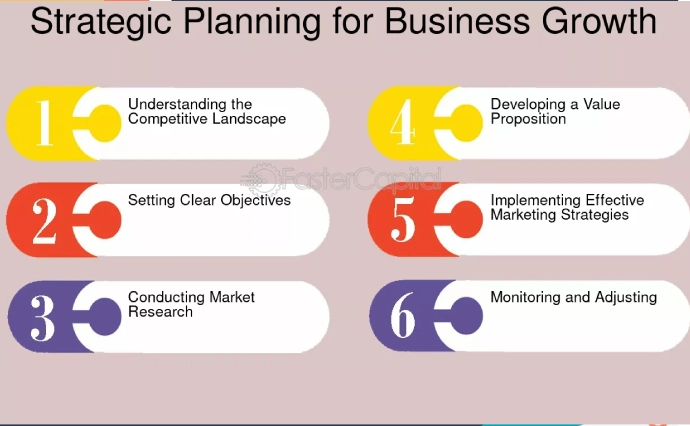John Teets, a name synonymous with corporate success and visionary leadership, left an indelible mark on the American business landscape. His journey from humble beginnings to the pinnacle of corporate America is a testament to his acumen, determination, and strategic brilliance in building his John Teets net worth. This article delves into the financial empire of John Teets, exploring the various facets that contributed to his impressive John Teets net worth and the legacy he left behind.
Biography
John Teets was born on September 23, 1931, in Chicago, Illinois. Growing up in a modest family, Teets learned the value of hard work and perseverance early in life. These traits would later become the cornerstone of his successful career in the business world.
| Biographical Information | |
|---|---|
| Full Name | John W. Teets |
| Date of Birth | September 23, 1931 |
| Place of Birth | Chicago, Illinois, USA |
| Education | Bradley University |
| Notable Position | CEO of Greyhound Corporation |
| Years as CEO | 1982-1994 |
Teets’ educational journey took him to Bradley University, where he earned a degree in business administration. This formal education laid the groundwork for his future endeavors in the corporate world. His natural leadership abilities and sharp business acumen were evident even during his college years, where he actively participated in various business-related projects and leadership roles.

The Rise to Corporate Leadership
John Teets’ career trajectory is a story of steady ascension through the corporate ranks. His journey to the top of the business world began with entry-level positions, where he quickly distinguished himself through his work ethic and innovative thinking. As he climbed the corporate ladder, Teets gained valuable experience in various aspects of business management, honing his skills and developing a comprehensive understanding of corporate operations.
The pinnacle of Teets’ career came with his appointment as the CEO of Greyhound Corporation in 1982. This position not only marked the height of his professional achievements but also set the stage for the accumulation of his significant net worth. Under his leadership, Greyhound transformed from a transportation company into a diversified conglomerate, showcasing Teets’ vision and strategic prowess.
Read about :John Farnham Net Worth:
John Teets Net Worth: Breaking Down the Numbers
As of 2024, John Teets’ net worth is retrospectively valued at approximately $50 million. This impressive figure is a culmination of his successful career, strategic investments, and business acumen. It’s important to note that this valuation is retrospective, as Teets passed away in 2011, but his financial legacy continues to be a subject of interest and analysis.
Sources of Wealth
Corporate Salaries and Bonuses: As the CEO of Greyhound Corporation, Teets earned substantial salaries and performance-based bonuses. His leadership role in a major corporation was a significant contributor to his wealth.
- Stock Options: Being at the helm of a publicly-traded company, Teets likely benefited from stock options and equity compensation, which could have appreciated significantly over time.
- Investments: Teets was known for his shrewd investment strategies. He diversified his portfolio across various sectors, including technology, real estate, and renewable energy. This diversification not only mitigated risks but also allowed him to capitalize on emerging market trends.
- Business Ventures: Beyond his role at Greyhound, Teets was involved in various business ventures and strategic acquisitions. These endeavors contributed to the growth of his personal wealth.
- Real Estate: Investments in real estate properties provided Teets with both passive income through rentals and long-term appreciation of property values.
Strategic Business Decisions and Their Impact on Net Worth
John Teets significantly influenced his net worth through strategic business decisions during his tenure at Greyhound Corporation. He characterized his approach to corporate leadership with bold moves and innovative strategies that transformed Greyhound from a simple transportation company into a diversified conglomerate.
Diversification Strategy
One of Teets’ most impactful decisions was the diversification of Greyhound’s business portfolio. He led the company’s expansion into various sectors, including:
- Food Services: Acquisition of companies in the food service industry.
- Consumer Products: Expansion into consumer goods manufacturing.
- Financial Services: Ventures into insurance and other financial products.
This diversification strategy not only increased the company’s revenue streams but also enhanced its market value, directly impacting Teets’ net worth through his stock holdings and performance-based compensation.
Corporate Restructuring
He implemented significant restructuring initiatives, including:
- Streamlining operations
- Divesting underperforming assets
- Strategic acquisitions to strengthen market position
These moves, while sometimes controversial, ultimately led to improved profitability and increased shareholder value, contributing to the growth of Teets’ personal wealth.
Investment Philosophy and Wealth Management
John Teets’ approach to wealth management was characterized by a combination of calculated risk-taking and conservative financial planning. His investment philosophy included:
- Diversification: Spreading investments across various sectors to minimize risk.
- Long-term Perspective: Focusing on investments with potential for sustained growth.
- Innovation Focus: Investing in emerging technologies and innovative business models.
- Real Estate: Maintaining a significant portion of his portfolio in real estate investments.
This balanced approach to wealth management allowed Teets to grow his net worth steadily over the years, even after his retirement from active corporate roles.
Philanthropy and Its Impact on Net Worth
While John Teets accumulated significant wealth throughout his career, he was also known for his philanthropic efforts. His charitable activities included:
- Establishing scholarships for underprivileged students
- Supporting healthcare initiatives in underserved areas
- Contributing to community development projects
While these philanthropic efforts may have reduced his net worth in the short term, they also contributed to his legacy and potentially provided tax benefits that could have indirectly preserved his wealth.
Legacy and Continued Influence
Even years after his passing, John Teets’ influence on the business world remains significant. His leadership style, strategic vision, and financial success continue to serve as a blueprint for aspiring entrepreneurs and corporate leaders. The wealth he accumulated during his lifetime stands as a testament to his business acumen and the effectiveness of his strategies.
Comparative Analysis: John Teets Net Worth vs. Other CEOs
To put John Teets net worth into perspective, it’s helpful to compare it with other CEOs of his era and industry. While Teets’ estimated $50 million net worth was substantial, it’s important to note that it was modest compared to some of his contemporaries in larger corporations.
| CEO Name | Company | Estimated Net Worth |
|---|---|---|
| John Teets | Greyhound Corp. | $50 million |
| Lee Iacocca | Chrysler | $150 million |
| Jack Welch | General Electric | $750 million |
| Sam Walton | Walmart | $8.6 billion |
This comparison illustrates that while Teets was undoubtedly successful, his net worth reflected his focus on corporate leadership rather than personal wealth accumulation. It’s also important to consider the different scales and industries of these companies when making such comparisons.
Factors Influencing John Teets Net Worth
Several key factors contributed to the growth and maintenance of John Teets’ net worth:
- Corporate Compensation: His role as CEO of Greyhound Corporation provided substantial salary and bonuses.
- Stock Market Performance: The value of his stock options and personal investments in the company would have fluctuated with market conditions.
- Economic Climate: The overall economic environment during his tenure affected company performance and investment returns.
- Personal Investment Decisions: Teets’ choices in personal investments, including real estate and other ventures, played a crucial role in his wealth accumulation.
- Tax Strategies: Effective tax planning likely helped in preserving and growing his wealth.
- Business Cycles: The performance of various industries in which Greyhound operated influenced the company’s profitability and, by extension, Teets’ compensation.
Lessons from John Teets’ Financial Success
John Teets’ journey to financial success offers several valuable lessons for aspiring business leaders and investors:
- Diversification is Key: Teets’ strategy of diversifying both corporate holdings and personal investments helped mitigate risks.
- Innovation Drives Growth: His willingness to transform and innovate within Greyhound Corporation led to significant growth opportunities.
- Long-term Vision: Teets focused on long-term strategies rather than short-term gains, a principle that guided both his corporate leadership and personal investments.
- Adaptability: His ability to adapt to changing market conditions and pivot business strategies when necessary was crucial to his success.
- Balanced Approach: Teets maintained a balance between aggressive business expansion and conservative financial management.
- Ethical Leadership: His reputation for ethical business practices contributed to long-term success and stability.
The Future of John Teets’ Legacy
While John Teets passed away in 2011, his financial legacy and business principles continue to influence the corporate world. The strategies he employed in building his net worth and managing Greyhound Corporation remain relevant in today’s business environment.
As we look to the future, several aspects of Teets’ approach to business and wealth creation continue to resonate:
- The importance of adaptability in a rapidly changing business landscape
- The value of diversification in both corporate strategy and personal investments
- The balance between innovation and fiscal responsibility
- The role of ethical leadership in long-term business success
These principles, which were integral to John Teets’ success and the growth of his net worth, offer valuable insights for current and future business leaders.
Conclusion
John Teets’ net worth of $50 million is a testament to his successful career as a corporate leader and savvy investor. His journey from modest beginnings to becoming the CEO of a major corporation like Greyhound exemplifies the American dream of success through hard work and determination. Teets’ strategic vision, innovative approach to business, and balanced investment philosophy not only built his personal wealth but also left a lasting impact on the business world.
His legacy extends beyond mere financial success. Teets’ approach to corporate leadership, marked by ethical practices and strategic innovation, continues to influence business strategies today. While his net worth may not have reached the astronomical figures of some of his contemporaries, it represents a balanced approach to success that combined corporate achievement with personal financial growth.
As we reflect on John Teets’ financial empire, we see a model of sustainable wealth creation that balances risk-taking with prudent management, corporate success with personal investment, and financial achievement with ethical leadership. His story remains an inspiration and a valuable case study for those aspiring to build their own financial empires in the complex world of modern business.
FAQs
What was John Teets’ primary source of wealth?
John Teets’ primary source of wealth was his career as CEO of Greyhound Corporation, including his salary, bonuses, and stock options.
How did John Teets diversify his investments?
Teets diversified his investments across various sectors, including technology, real estate, and renewable energy.
What was John Teets’ estimated net worth?
As of 2024, John Teets’ net worth is retrospectively valued at approximately $50 million.
How did John Teets’ leadership style contribute to his net worth?
Teets’ innovative and strategic leadership at Greyhound Corporation led to the company’s growth and diversification, which in turn increased his personal wealth through increased company value and performance-based compensation.
Did John Teets engage in philanthropy?
Yes, John Teets was known for his philanthropic efforts, including establishing scholarships and supporting healthcare initiatives.







